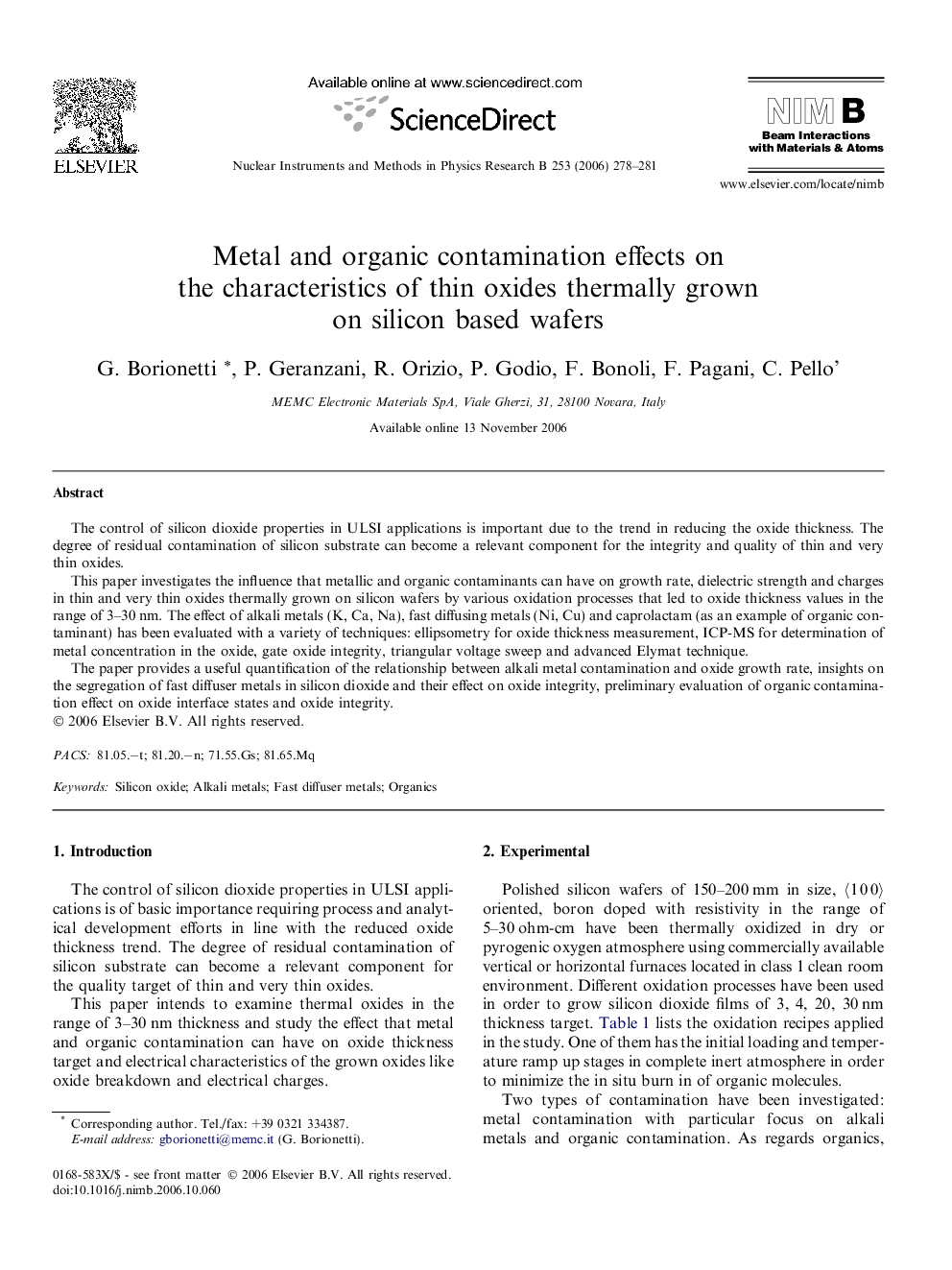| Article ID | Journal | Published Year | Pages | File Type |
|---|---|---|---|---|
| 1687967 | Nuclear Instruments and Methods in Physics Research Section B: Beam Interactions with Materials and Atoms | 2006 | 4 Pages |
The control of silicon dioxide properties in ULSI applications is important due to the trend in reducing the oxide thickness. The degree of residual contamination of silicon substrate can become a relevant component for the integrity and quality of thin and very thin oxides.This paper investigates the influence that metallic and organic contaminants can have on growth rate, dielectric strength and charges in thin and very thin oxides thermally grown on silicon wafers by various oxidation processes that led to oxide thickness values in the range of 3–30 nm. The effect of alkali metals (K, Ca, Na), fast diffusing metals (Ni, Cu) and caprolactam (as an example of organic contaminant) has been evaluated with a variety of techniques: ellipsometry for oxide thickness measurement, ICP-MS for determination of metal concentration in the oxide, gate oxide integrity, triangular voltage sweep and advanced Elymat technique.The paper provides a useful quantification of the relationship between alkali metal contamination and oxide growth rate, insights on the segregation of fast diffuser metals in silicon dioxide and their effect on oxide integrity, preliminary evaluation of organic contamination effect on oxide interface states and oxide integrity.
